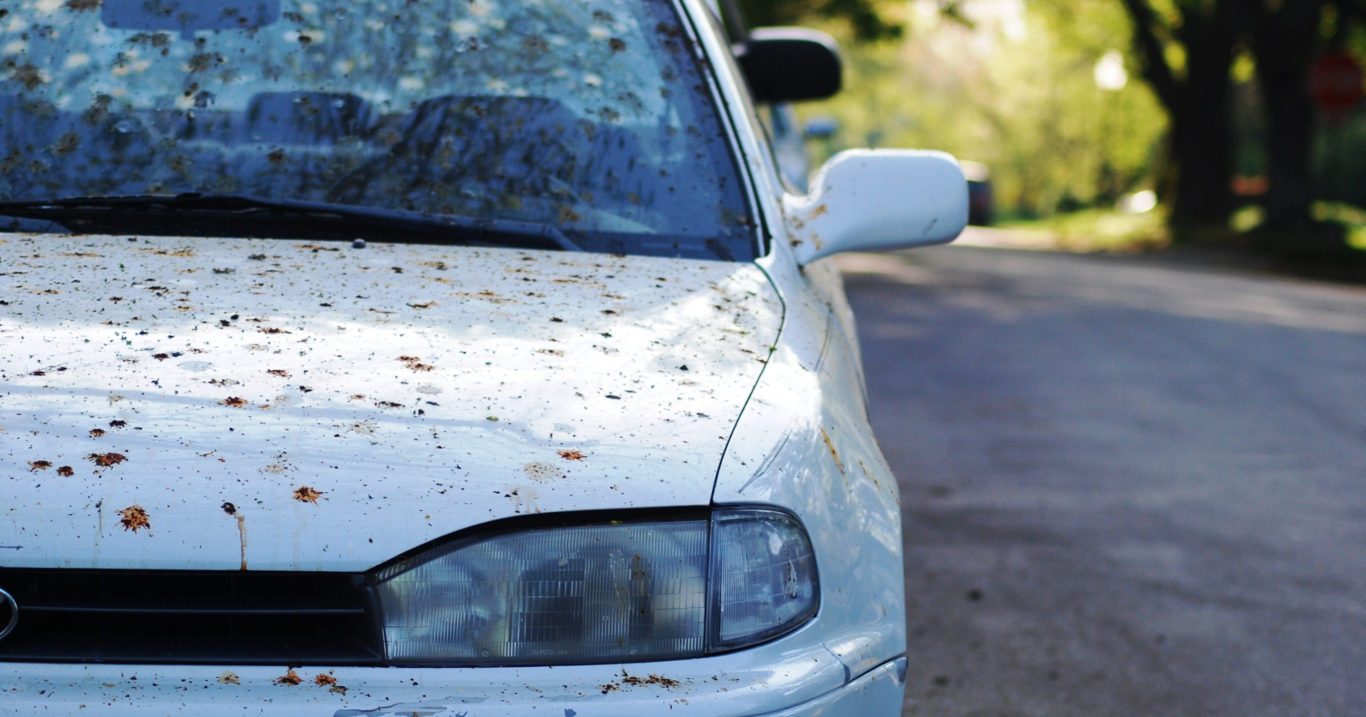
Bird Droppings vs. Your Car
How to win this age-old conflict.
Did you just wash your car? Then it is just a matter of time before it is covered in bird droppings! In the summer this is most apparent because we tend to keep our cars clean in the warm weather, but the hot sun mixed with bird dirt is a recipe for something we call in the detailing world “etching”, also known as permenant damage to your vehicle’s clear coat. Let’s look at why etching happens, how to avoid it, and how to repair it when it hits.
The Gross Part
Birds don’t have bladders. Instead, all of their liquid and solid waste is stored and disposed of together, which explains the juicy quality of a bird deposit on your freshly washed Mustang. A bird’s kidneys concentrate uric acid and dispose of it in the waste, and since uric acid crystals are white, so are bird droppings. Uric acid PH levels are extremely high (between 3-4.5) and this acidic quality is where the problems begin.
The Sun is Hot, the Acid is Toxic
When the summer sun is at full strength it has an effect on the sealing properties of your vehicle’s clear coat. Heat causes expansion, and as the molecules in the clear coat expand, the space between them increases, making it more porous. When your clear coat is covered in bird droppings, and those droppings are full of a powerful acid, and the heat from the sun causes the clear coat underneath to expand and become more porous, this penetration of the surface causes permanent damage.
What You Can Do: Prevention
To give yourself a window of opportunity to clean up any messes before they are damaging, make sure your vehicle always has a fresh coat of wax. This will offer some short lived protection, giving you a little bit of time to address the situation before the damage occurs. The quicker you can remove the bird droppings, the better, of course, but a sealent between the acid and your clear coat will definitely help.
What You Can Do: Repair
There are two types of etching that occurs from uric acid damage. One type is called “Topical Stain Etching”, and the other is called “Wrinkle Etching”. Topical Stains are shallow dull spots resembling hard water stains on the clear coat surface. Wrinkle Etching, or Fracture Etching is more problematic. This type of etching is the result of the thermodynamic heating and cooling combined with acidic etching. Here, the paint and clear coat fracture as they expand and contract, causing deep fissures in the clear coat surface. Here you can see Topical Etching on the left and Wrinkle Etching on the right:


Since Topical Etching In this case the etching is only taking place on the surface it can usually be corrected with compounding, buffing, or in difficult situations, wet sanding. Again, it is important to remember that time is of the essence. The quicker an acid etch is addressed, the more likely it can be corrected without too much work.
Wrinkle Etching is tougher to repair. At this point, the damage has usually penetrated the clear coat surface and is beginning to damage the paint layers. Etching that has reached this stage usually requires repainting.
Need Help?
Do you have either of these issues in your clear coat? We would love to help you out. You can attach a photo to a message on our contact page and we can give you a bit of free advice on the best course of action.